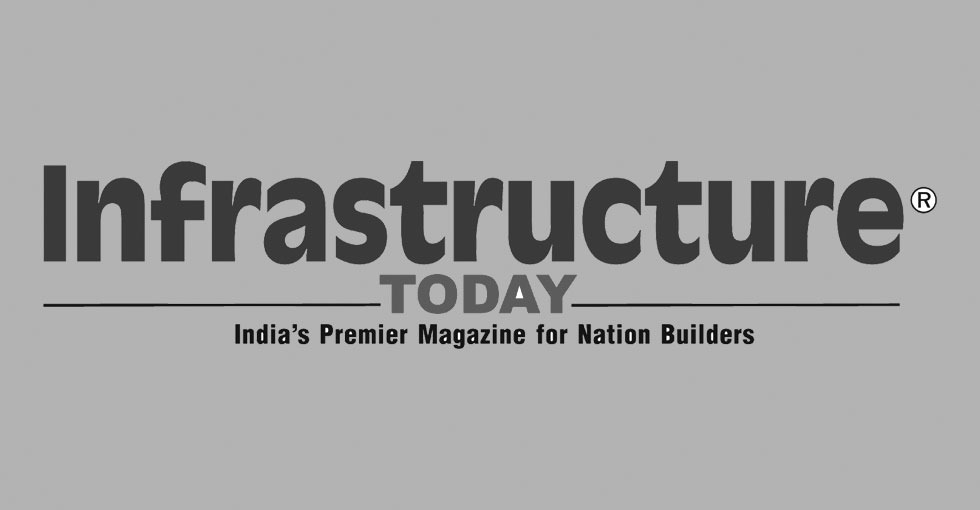Capacity of India's ports has been downplayed in recent times in favour of building up non-major ports. Anil Singh explains.
With globalisation, cross-border trade has grown monumentally and continues to acceÂlerate at a never-seen-before pace. India has one of the most rapidly expanding infrastructure privaÂtisation programmes among the developing countries. Four sectors alone account for more than 90 per cent of the number and total value of projects planned in the infrastructure space: roads and bridges about 54 per cent, ports 20 per cent, airports 17 per cent and railways
two per cent.
The Indian maritime industry has witnessed some major changes in the last couple of years. It was only 12 years ago that the Government of India ushered in an era of privatisation. With the signing of the first licence agreement between Jawaharlal Nehru Port (JNPT) and DP World's Nhava Sheva International Container Terminal, private participation gathered momentum. Today there is significant investment from the national and international private sector into the industry.
There has been a 400 per cent jump in the volume of cargo handled by the non-major ports (many of which are private) in the last decade. Further, the private terÂminals have also proved to be more efficient and have matched world-class standards. This has been one of the contributing factors to the growth of India's export-import trade, which stood at close to 9 million TEUs in FY 2010-11. Currently, 22 projects with private participÂation on BOT or captive use are in operation at the majÂor ports (at cost of Rs 6,300 crore) and 21 projects are in the pipeline/under implementation (Rs 12,600 crore).
However, despite low labour cost, India's goods overÂseas are losing their competitive edge, one of the main reasons being high logistics cost stemming from our poor infrastructure. According to a recent McKinsey Report “Building India', approximately $45 billion are lost each year due to inefficiencies in India's logistics network. India spends 13 per cent of its GDP on logistics, more than what the US (9.5 per cent) and Germany (8 per cent) spend. Logistics accounts for around 21-23 per cent of the production expenses in India, as compared to 3-6 per cent in developed Western markets.
Overutilisation means we need capacity: Capacity over-utilisation at major ports is becoming one of the important challenges for almost all ports in India; the average capacity utilisation at most ports is over 95 per cent, which is very high compared to global standards. India's container traffic is growing at ambitious levels of 12-15 per cent year-on-year. The shortage of capacity, coupled with increasing demands of trade, is pushing port operators to handle more volume than what is optimum. In fact, over the last three years, the non-major ports of India have seen a dramatic increase in volume for containers and bulk cargo, with Mundra, Pipavav, Dhamra and Krishnapatnam leading the way with double-digit growth in volumes. The share of conÂtribution from the state ports has been growing expÂonentially due to favourable policies and opportunities from the state governments.
Finally, a terminal relief: Bringing someÂwhat of a relÂiÂef in capacity shortage to the industry
was International Container Transhipment Terminal (ICTT) in Kochi-the only transhipment hub in India. India's first transhipment container terminal was added to the increasing list of PPP investments that now domÂinate the Indian port industry on 11 February 2011. The ICTT, owned and operated by DP World, promises to boost India's maritime footprint and will play a significant role in achieving India's Maritime Agenda 2020. The Prime Minister, who expressed his pride at this project, recalled fondly the time six years before, when he laid the foundation stone of this project togÂether with DP World's Chairman Sultan Ahmed Bin Sulayem. Shipping lines now have options to divert their volumes from the saturated ports to other gateways of India while servicing their customers efficiently.
Among the chief impediments are the tariff regulÂation regime for major ports, a review and rationaliÂsation of the model concession agreement for ports inclÂuding the upÂfront tariff setting guidelines, the mechanism of revenue sharing, the dredging and channel deepening programmes to allow larger ships to call at Indian ports, road and rail connectivity projects. The Maritime AgenÂda 2010-2020 recognises these issues and unless speedily resolved both growth in capacity and volumes could be hindered.
The author is Senior Vice President and Managing Director, DP World Subcontinent Region. DP World operates major ports in India and abroad.
FlashNews:
PM Surya Ghar Rooftop Solar Scheme Crosses 1.95 Million Installations, Delivers 770,000 Zero Bills
Waaree Gets ALMM-II Nod for 5.25 GW Solar Cells
Inox Wind Secures Repeat 100 MW Order from Jakson Green
SITA Strengthens India’s Digital Aviation Infrastructure as Passenger Growth Accelerates
India moved from power scarcity to sustainability, says Piyush Goyal
GM Rao Urges Andhra University Alumni to Drive Innovation, Entrepreneurship and India Growth Story
India Begins Hydrogen Car Trials as Minister Joshi Drives Toyota Mirai to Parliament
MNRE Refutes Financing Pause; Calls for Expansion into Upstream Solar Manufacturing
IndiGrid to Acquire Gadag Transmission for ₹3.72 Billion
India Launches First All‑Electric Tug at Deendayal Port, Accelerates Green Maritime Shift
Bharatmala Pariyojana Executes 61% of Phase‑I Highway Targets, Boosts Freight Speed and Connectivity
Waaree Tops India’s Solar Module Shipments in Q3 2025, Reinforces Global Competitiveness
AISATS Expands Nationwide, Launches Ground Handling at Cochin Airport with Future‑Ready Tech
TIL Bags ₹2 Billion Orders Across Defence and Logistics, Validates Dual-Sector Strategy
Indian Railways to Roll Out OTP‑Based Tatkal Window Tickets Nationwide to Curb Misuse
Sanchar Saathi Row: Scindia Defends App as Voluntary, Transparent and Consumer‑Protective Amid Privacy Debate
REIAs Issue 67.5 GW Renewable Energy LoAs Since April 2023 with Zero Cancellations: Joshi
Rail Freight Rises 4.2% in November as Steel, Iron Ore and Fertiliser Volumes Surge
NHAI Partners Reliance Jio to Launch Telecom‑Based Safety Alerts on National Highways
Home » Expertspeak: Now, to capitalise on ICTT
Expertspeak: Now, to capitalise on ICTT
Ports & Shipping
July 1, 2011July 1, 2011



Leave a Reply
You must be logged in to post a comment.